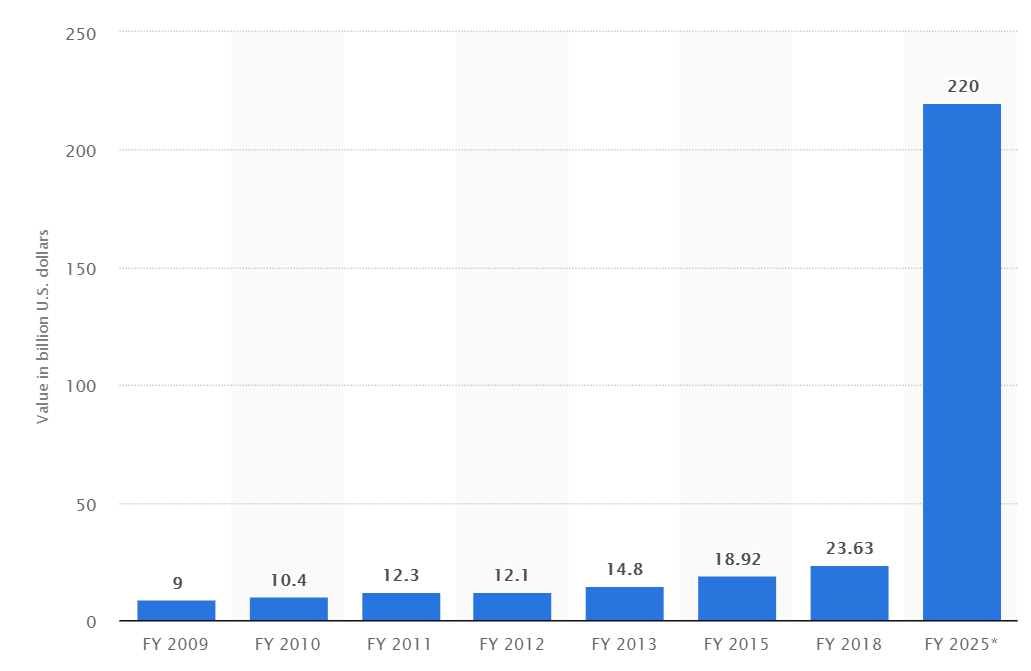The Fast-Moving Consumer Goods (FMCG) industry is one of the most dynamic sectors in India, contributing significantly to the economy and touching the lives of millions daily. By 2025, India’s FMCG market is projected to reach US$220 billion, driven by rising disposable incomes, rural penetration, and digital adoption.
But the true backbone of this growth lies in distribution management. With diverse FMCG distribution channels from kirana stores and modern trade to quick commerce and e-commerce, brands must build efficient systems to ensure products move seamlessly across the FMCG distribution network.
Let’s get into this and see how technology, particularly distribution management systems and distributor management software, is transforming FMCG distribution in India.
Scale up your FMCG distribution network with FieldAssist
Request Demo
FMCG in India: The Market Landscape
Table of Contents
ToggleThe Indian FMCG industry is set to grow from US $220 billion in 2025 to US $1.1 trillion by 2033, at a CAGR of 17–21%.
Rural markets are increasingly vital, projected to contribute nearly US $220 billion by 2025, accounting for nearly half the sector’s growth.Kirana stores continue to dominate, responsible for nearly 80% of FMCG sales, but digital channels are growing rapidly.
Online grocery, a major driver, is forecasted to expand from US$9 billion in 2023 to US$80.6 billion by 2032.Clearly, scaling up means rethinking distribution management across urban and rural India.
What Is FMCG Distribution?
FMCG distribution refers to the process of moving goods from manufacturers to end consumers quickly and efficiently. It includes a layered FMCG distribution network involving super stockists, distributors, wholesalers, retailers, and now digital platforms.
Key elements include:
Primary Sales – Manufacturer to super stockist/distributor
Secondary Sales – Distributor to retailer via FMCG distribution channels
Tertiary Sales – Retailer to consumer
For smaller brands, multi-brand distributors are essential, while larger FMCG players often employ exclusive distribution management systems for higher control.
Watch How Haldiram’s is boosting a scalable distribution across its ecosystem with FieldAssist
FMCG Distribution in Rural India
Rural India is no longer a secondary market; it’s the next frontier. With better connectivity and smartphone penetration, rural households are spending up to 50% of their expenditure on FMCG products.
As brands saturate metros, the only way to scale is volume, and rural markets deliver that. This expansion, however, demands robust distribution management systems that can support last-mile delivery and ensure visibility even in remote areas.
The graph below represents the value of the FMCG market in rural and sub-urban India. It can be seen that the market value is increasing gradually every year but is expected to be valued at a whopping 220 billion dollars by the end of the financial year 2025.

Source: Statista
How do Companies Work with the FMCG Distribution Business Model?
A Distribution Management System (DMS) is transforming the way FMCG companies handle operations. It automates order processing, inventory management, and secondary sales tracking, ensuring distributors and brands stay aligned.
Benefits of distributor management software include:
- Real-time inventory and sales tracking
- Route optimization to reduce logistics costs
- Demand forecasting using AI and machine learning
- Seamless integration with Sales Force Automation (SFA) tools
What are some of the challenges in the FMCG Distribution Network in India?
Despite its size, the FMCG distribution network in India faces structural challenges:
Inventory Management – Lack of real-time stock visibility leads to overstocking, understocking, or stock dumping.
Damaged/Returned Goods – Tracking returns and wastage remains complex.
Price Transparency – Retailers often miss company schemes, while distributors may mark up MRPs.
Fragmented Distribution Channels – Multiple FMCG distribution channels create visibility gaps.
How Technology Is Shaping Distribution Management?
By 2025, the majority of FMCG companies will be using digital tools for brand analytics, and over 50% will adopt AI-driven demand forecasting.
Here are the top innovations in distribution management:
AI & Predictive Analytics – Smarter inventory and demand forecasting.
eB2B Platforms – Brands bypass wholesalers to directly engage retailers.
Quick Commerce – Fastest-growing FMCG distribution channel, with 50–100% YoY sales growth.
Cold Chain Logistics – Firms like ColdStar Logistics are launching hubs with real-time visibility, improving FMCG distribution efficiency.
ONDC – Government-backed network that democratizes digital commerce, empowering kirana stores and brands alike.
Closing Thoughts: The Future of FMCG Distribution
The FMCG industry in India is rapidly transitioning into a new era of distribution, driven by technology, agility, and real-time insights. With tools like distribution management systems and distributor management software, brands are solving age-old challenges while building stronger, data-driven FMCG distribution networks.
As consumer expectations shift toward immediacy and convenience, the winners will be those FMCG companies that embrace technology to streamline their distribution management from rural kiranas to modern trade and quick commerce platforms.
Want to see how a smart distribution management system can supercharge your FMCG business? Let’s talk.
Enhance FMCG Distribution by leveraging FieldAssist DMS
Request Demo
About Post Author
Rashmi Kapse
Rashmi is a Content Specialist at FieldAssist. After spending 11 years in the Executive Search business she decided to change tracks and follow her passion for writing. For the past 8 years, she has been writing on Sales Tech, HR Tech, FMCG, Consumer Goods, F&B and Health & Wellness.


